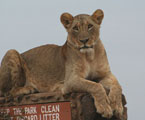East Africa is a diverse pool of experiences and wonders. The following information may be helpful in planning your safari adventure.
Kenya’s different topographical regions experience distinct climates.
Generally, the hottest time is in February and March and the coolest in July and August.
Rainfall occurs seasonally throughout most of Kenya. The coast, eastern plateaus, and lake basin experience two rainy seasons: the “long rains” extending roughly from March to June, and the “short rains” that last from approximately late October to mid December.
The highlands of western Kenya have a single rainy season, lasting from March to September.
All parts of the country are subject to periodic droughts, or delays in the start of the rainy seasons.
Average temperature
The coastal region is largely humid and wet. Average temperatures ranging from 21° to 32°C (70° to 90°F) in January and 20° to 29°C (68° to 84°F) in July.
The low plateau area is the driest part of the country. Average temperatures ranging from 19° to 37°C (66° to 99°F) in January and 19° to 34°C (66° to 93°F) in July.
Nairobi, the capital city, is in the temperate Kenyan highlands. Average temperatures ranging from 9° to 29°C (48° to 84°F) in January and 7° to 26°C (45° to 79°F) in July.
Elevated areas within the highlands receive much larger amounts of rainfall. Average temperatures in this region range from 14° to 34°C (57° to 93°F) in January and 14° to 30°C (57° to 86°F) in July.

Dave McKelvie



